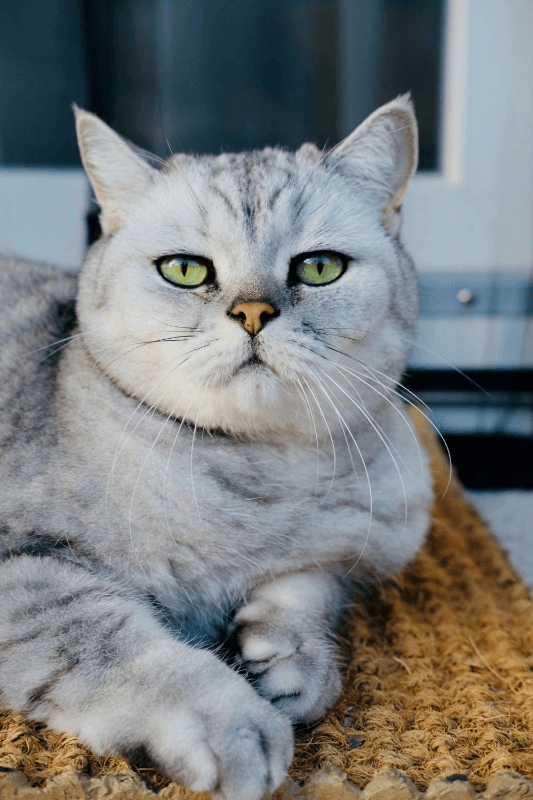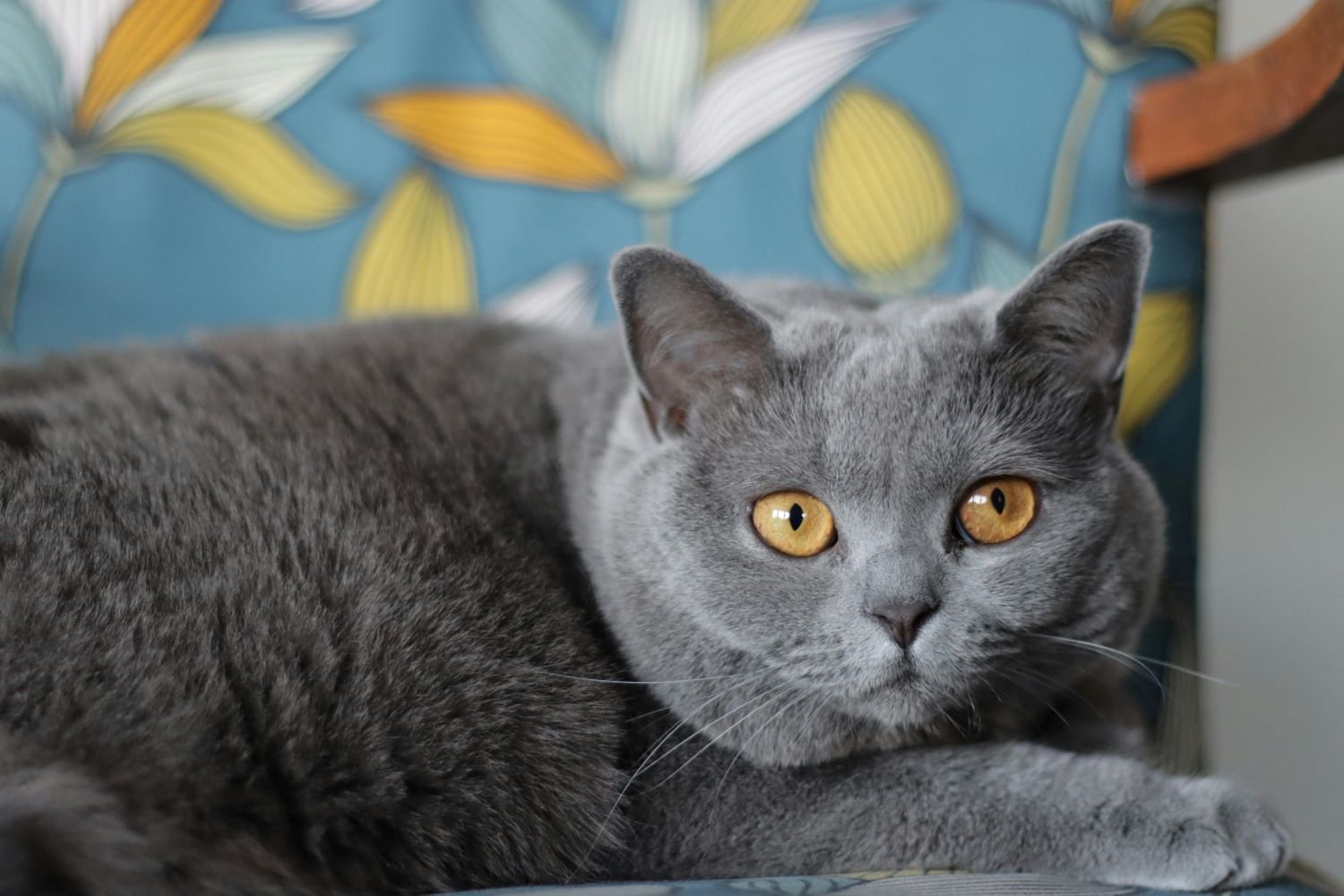The British Shorthair, with its plush coat and amiable temperament, stands as a paragon of feline grace and calmness. Originating from the United Kingdom, this breed has garnered a loyal following for its robust health, sturdy build, and laid-back personality. Renowned for their dense, plush fur that comes in an array of colors and patterns, these cats are not just a pet but a luxurious companion that enriches the lives of their owners. Their round faces and big eyes exude an aura of innocence, making them irresistible to cat enthusiasts around the world. Delve into the world of British Shorthairs to understand why they are celebrated as one of the most beloved cat breeds across the globe.
Key Takeaways
- British Shorthairs are sturdy, affectionate cats that make great companions for families and individuals alike, fitting well into various living situations.
- Regular health check-ups and a balanced diet are crucial for maintaining their well-being, as they are prone to certain breed-specific health issues.
- These cats thrive in environments where they can receive plenty of love and attention but also appreciate their own space, making them suitable for both houses and apartments.
- When considering adopting a British Shorthair, it’s important to seek reputable breeders or adoption centers that can provide health clearances and support for new owners.
- Understanding the breed’s characteristics and needs can help ensure a long and happy life for your cat, enhancing the bond between pet and owner.
- Engaging with a community of British Shorthair owners online or in person can provide valuable tips and insights for care, training, and enrichment activities.
Breed Overview
History
The British Shorthair traces its roots back to Roman Britain. Romans brought cats from Egypt to control vermin populations. Over time, these cats bred with local European wildcats, creating the ancestors of today’s British Shorthair.
The breed played a vital role in British society throughout the centuries. They were cherished for their hunting prowess and companionable nature. However, by the late 19th century, interest in pure breeding revitalized the British Shorthair. Breeding programs began to standardize their appearance, marking a resurgence in popularity.
Physical Characteristics
British Shorthairs are known for their dense coats and broad faces. Their fur is thick and plush, designed to withstand harsh climates. This breed showcases a wide range of colors and patterns. The most iconic is the British blue, a solid grey-blue coat with deep orange eyes.
They possess a muscular build and are medium to large in size. This robustness was essential for their ancestral role in vermin control. Today, it adds to their charming appearance.
Personality and Temperament
These cats are celebrated for their calm and easygoing nature. They show deep loyalty to their families but maintain an air of independence. This blend makes them perfect companions who respect personal space.
Despite their laid-back demeanor, they’re quite intelligent and playful, particularly as kittens. This playful side often carries into adulthood in bursts of energy.

Health And Care
Common Health Issues
British Shorthairs are generally healthy, but they have a few genetic predispositions. Hypertrophic cardiomyopathy (HCM) and polycystic kidney disease (PKD) are two such conditions. Both can be serious if not caught early.
Obesity is another common concern for these cats due to their laid-back lifestyle. It’s crucial for owners to monitor their weight closely. Regular vet check-ups play a vital role in catching these issues early. They help ensure the cat lives a long, healthy life.
Dietary Needs
A balanced diet is essential for British Shorthairs to prevent obesity. Their food should contain high-quality proteins and fats to support their muscular build and energy needs. Essential nutrients also keep their dense coat shiny and healthy.
Owners should establish regular meal times and practice portion control. This routine helps prevent overeating and maintains an ideal weight.
Exercise Requirements
Despite their calm demeanor, British Shorthairs need daily exercise to stay fit. Play sessions with interactive toys can keep them engaged and active. These activities not only help in managing their weight but also ward off boredom.
Exercise is crucial for maintaining physical health and mental well-being. It ensures these cats lead a balanced, happy life.
Grooming
British Shorthairs have minimal grooming needs thanks to their short coats. However, regular brushing is important to minimize shedding and prevent hairballs.
Routine nail trimming and ear cleaning are also recommended to keep them in top condition. These practices contribute to the overall health and happiness of the cat.
Living with a British Shorthair Cat
Training and Socialization
British Shorthairs showcase a notable level of intelligence, which facilitates their training process. They grasp new commands and tricks with ease, making the training sessions not only productive but also enjoyable for both the cat and its owner. It’s crucial, however, to start their training and socialization at an early age. This early start helps them become well-adjusted adults who can comfortably interact with people and other pets.
For optimal results, owners should employ positive reinforcement techniques like treats and praises. These methods encourage the cat while keeping the experience positive. Avoiding punishment is key, as it can lead to fear and distrust, hindering the learning process.
Environment
The adaptability of British Shorthairs is one of their most appealing traits. They thrive in various living situations, from spacious houses to compact apartments. Despite their easygoing nature, creating a safe and stimulating environment indoors is paramount for their well-being. This breed’s curiosity drives them to explore their surroundings, making it essential to provide areas for climbing and observing.
Owners should consider setting up cat trees or shelves specifically for their British Shorthair to climb on. Ensuring that windows are secure but allow visual access to the outdoors can satisfy their curiosity safely.
Activities They Enjoy
British Shorthairs possess a playful side that enjoys interactive games. Engaging them in activities like fetch or providing puzzle toys can keep them mentally stimulated and physically active. They also find joy in simple pleasures such as playing in cardboard boxes or chasing laser pointers.
Regular play sessions are vital for bonding with your British Shorthair. Gentle play that encourages interaction without overexertion aligns perfectly with their temperament. These sessions not only strengthen the bond between pet and owner but also ensure that the cat remains active and healthy.
Breeder Advice and Adoption
Choosing a Breeder
When you decide to welcome a British Shorthair into your home, finding the right breeder is crucial. Look for reputable breeders who prioritize the health and well-being of their cats. These breeders conduct thorough health screenings on all their breeding cats to ensure they are free from genetic diseases common in British Shorthairs.
It’s important to ask for health clearances and, if possible, visit the breeding facility yourself. This visit can give you insight into the conditions in which the kittens are raised. You want to see clean, spacious areas where the cats can play and socialize.
Researching the breeder’s history is also vital. Look for reviews from previous buyers to understand their experiences. A breeder with many positive reviews is likely to be trustworthy and committed to raising healthy, well-socialized kittens.
Adoption
Adopting a British Shorthair can be a rewarding alternative to buying one from a breeder. Many shelters and rescue organizations have adult cats looking for forever homes. Adopting an adult cat has its benefits; they may already be socialized, litter-trained, and less demanding than kittens.
Consider adoption if you’re looking for a companion that may have already developed its personality. You’ll not only save a life but possibly find a cat that fits seamlessly into your family dynamic, especially if living with other pets was discussed in the previous section.
Before bringing your new cat home, prepare your space. Ensure it’s safe and cat-friendly, with plenty of places for them to hide, sleep, and explore. Integrate them slowly into your family, giving them time to adjust at their own pace.
Top Cat Grooming Tools (Click Here)
Summary
The British Shorthair stands out for its robust health, easy-going temperament, and minimal grooming needs, making it an ideal pet for various households. Its adaptability to indoor living conditions and compatibility with children and other pets underscore its appeal as a family companion. Prospective owners should seek reputable breeders or consider adoption to ensure they welcome a healthy and well-socialized cat into their home.
Adopting a British Shorthair offers the dual advantage of providing a loving home to a cat in need while bringing joy and companionship to families. Potential owners are encouraged to conduct thorough research and consult with veterinarians and breed experts to fully understand the responsibilities of caring for this distinctive breed. By doing so, they contribute to the well-being of their future pet and ensure a harmonious relationship that enriches both their lives and the life of their British Shorthair.
Frequently Asked Questions
What is the general lifespan of a British Shorthair cat?
British Shorthairs typically live for 12 to 20 years, provided they receive proper care and regular veterinary check-ups.
How often should a British Shorthair be groomed?
They should be groomed once a week to remove loose fur and maintain coat health, although more frequent grooming may be necessary during shedding seasons.
Are British Shorthairs good with children and other pets?
Yes, British Shorthairs are known for their calm and friendly disposition, making them excellent companions for children and usually get along well with other pets.
What common health issues should owners of British Shorthairs be aware of?
British Shorthairs can be prone to heart disease (HCM), obesity if not properly managed, and dental issues. Regular vet visits are essential for early detection and management.
Can British Shorthairs adapt to living in an apartment?
Yes, British Shorthairs can thrive in apartments due to their laid-back nature. They do not require extensive outdoor space but do need engagement through play and interaction.
What advice do breeders give regarding adopting a British Shorthair?
Breeders advise ensuring that you adopt from a reputable source that provides health clearances. Also, consider the cat’s personality to ensure it matches your lifestyle for a harmonious relationship.
How important is diet in the care of a British Shorthair?
A balanced diet is crucial for maintaining the health of a British Shorthair. It helps prevent obesity and supports overall well-being. Consultation with a vet can provide personalized dietary recommendations.







0 Comments